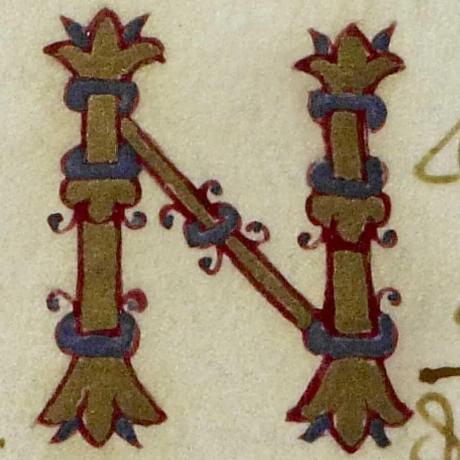
hctexts
A selection of Greek and Latin texts used in teaching at Holy Cross
hctexts
This repository hosts a selection of Greek and Latin texts used in teaching at Holy Cross, along with related analytical material, including morphological databases. The material in this repository is the basis for a pilot program in 2019-2020 restructuring the organization and sequence of our Latin curriculum based on a computational analysis of a target corpus students are reading.
What's here
Digital texts are in the cex directory, in the simple delimited-text CEX format, using CTS URNs to identify each citable node. As indicated in the associated catalogs, these texts derive from openly licensed material available from projects such as Tesserae and the Latin Library.
The lewis-short directory mirrors the markdown version of Lewis-Short's lexicon distributed under a CC 3.0 BY-NC-SA license at https://github.com/Eumaeus/cex_lewis_and_short. Entries in the lexicon are identified by CTS URN: where possible, there are coordinated with identifiers for lexemes in our morphological lexica.
The morphology-latin directory includes morphological datasets for building parsers with tabulae. The datasets are organized to minimize effort in developing parsers following different orthographic practices (such as differing use of i, j, u and v) by isolating common data in morphology-latin/shared, and factoring out material specific to different orthographies as follows:
-
morphology-latin/shared: data that can be used in common with
lat23,lat24andlat25data sets because it includes no i/j or u/v characters. Lexemes are identified with URNs mapped to the URNs in Lewis and Short. -
morphology-latin/shared-xls: data that can be used in common with
lat23,lat24andlat25data sets because it includes no i/j or u/v characters. Lexemes do not have a corresponding URN in Lewis and Short. - morphology-latin/lat23: orthography with 23 alphabetic characters (i and u both vocalic and semivocalic)
- morphology-latin/lat24: orthography with 24 alphabetic characters (i both vocalic and semivocalic, distinct u and v)
- morphology-latin/lat25: orthography with 25 alphabetic characters (i, j, u and v all distinct)
Utilities
The scripts directory includes some useful scripts for building morphological parsers and analyzing texts. Filenames with an .sc extension are Scala scripts that can be loaded in an sbt console (with :load FILENAME in an sbt console). Filenames with an .amm extension are Scala scripts that can be run in an ammonite REPL, or with the Atom editor with the Hydrogen plugin.
-
compiler.scDefines a single function,compile, that takes a Vector of directory names for morphological data sets to include. E.g.,compile(Vector("shared", "shared-xls", "lat23"))compiles a morphological data from the two shared data sets (one with lexemes identified by Lewis-Short URN, and one identified by URNs not appearing in Lewis-Short) together with data in an orthography using 23 alphabetic characters.
Technological infrastructure
Prerequisites:
- the Stuttgart FST toolkit
- a JVM and sbt
Automatically included code libraries we rely on:
-
tabulae: we use
tabulaeto compile a binary morphological parser with SFST, parse automatically generated wordlists, and analyze the parser's output for individual tokens. -
latin-corpus:
latin-corpuslatin-corpusoffers higher-level manipulation of a corpus in terms of its morphology by associating a citable corpus with the output from a parser built withtabulae. It can profile usage of forms or vocabulary in a corpus, and filter the corpus to include or exclude passages containing a specified set of features or vocabulary.
Current work and future plans
In 2019-2020, we are using material from this repository in two course sequences. Students in first-year Latin are reading unaltered material from Hyginus' Fabulae; students in intermediate Latin are reading targeted selections from the first five books of Livy's History. We will be evaluating the results of this pilot in the spring of 2020, and are preparing an application for a three-year project to extend the pilot program.
More information
For latin-corpus: https://github.com/neelsmith/latin-corpus
For tabulae: https://github.com/neelsmith/tabulae
Recent and upcoming conference presentations:
- Daniel Libatique, Dominic Machado, Neel Smith, "Caveat magister: a computational approach to designing a Latin curriculum" (Digital Humanities 2020, Ottawa).
- Dominic Machado and Daniel Libatique, "Lector Intende, Laetaberis: A Research-Based Approach to Introductory Latin," Classical Association of New England Annual Meeting 2020.
- Neel Smith, Digital Approaches to Recognizing Latinities (pl.), Classical Association of New England Annual Meeting 2020.
- Richard Ciolek, James Garry, Michael Rehab, Neel Smith, Zachary Sowerby, Corpus-specific morphological analysis for research and teaching conference Digital Approaches to Teaching Historical Languages (Humboldt University, Berlin), March, 2019.